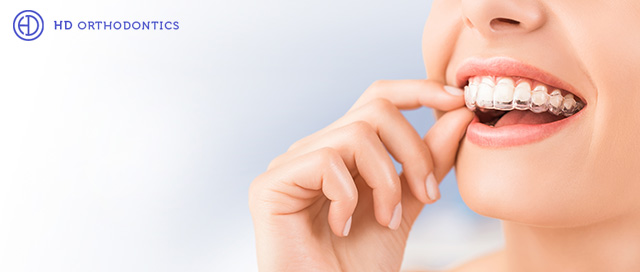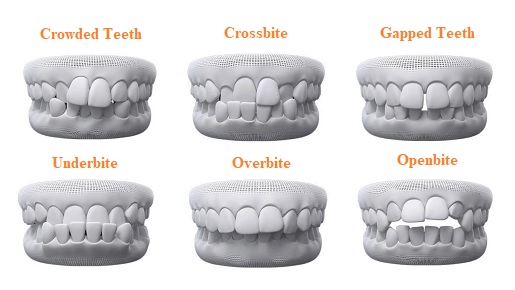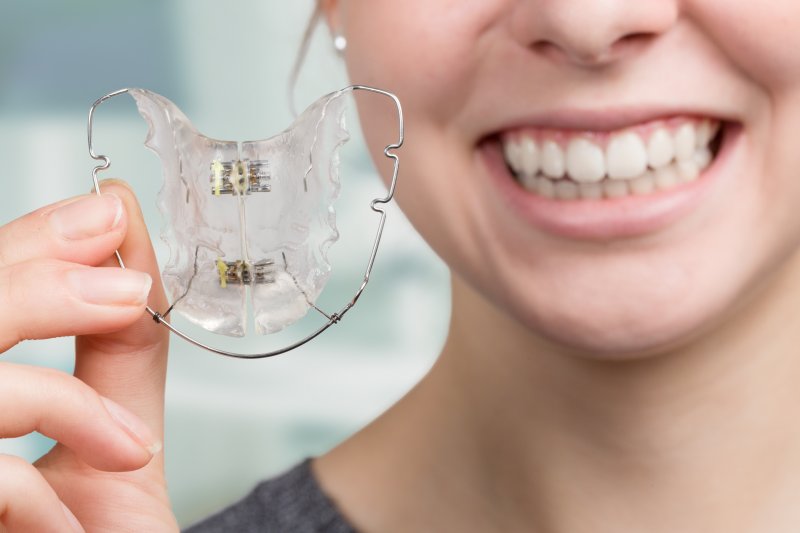What to Anticipate During Your Invisalign Journey: A Comprehensive Overview
What to Anticipate During Your Invisalign Journey: A Comprehensive Overview
Blog Article
Invisalign vs. Traditional Dental braces: Which Option Is Right for You?
When taking into consideration orthodontic therapy, the selection between Invisalign and typical braces provides a number of vital aspects that warrant cautious examination. Invisalign supplies a discreet alternative with detachable aligners, while standard braces provide a more noticeable yet effective service for serious imbalance.
Introduction of Treatment Alternatives

On the other hand, traditional dental braces contain steel braces and cables that are bonded to the teeth. This approach applies continuous pressure over time to attain alignment. While effective for intricate orthodontic concerns, typical dental braces call for normal brows through for adjustments and can posture challenges in maintaining dental health because of the difficulty of cleaning up about braces and wires.
Both choices have their advantages, and the option commonly hinges on details oral problems, lifestyle preferences, and individual compliance. Ultimately, getting in touch with an orthodontic professional is essential for determining one of the most ideal treatment strategy tailored to individual requirements. Understanding the subtleties of each choice can considerably affect the total success of orthodontic treatment.
Visual Factors To Consider
A considerable variable affecting the choice between Invisalign and standard braces is the aesthetic allure each treatment uses. Invisalign aligners are crafted from clear plastic, making them basically unseen when used. This very discreet look is specifically appealing to young adults and grownups that might really feel self-conscious regarding their orthodontic treatment. The capability to maintain a natural smile throughout the placement process can dramatically boost the individual's self-confidence in professional and social setups.
On the other hand, traditional braces include metal brackets and wires, which can be a lot more noticeable. While advancements in orthodontic technology have actually resulted in the advancement of smaller brackets and colored elastics, conventional dental braces still preserve a more conspicuous account. For some individuals, the exposure of dental braces may deter them from looking for required therapy.
Inevitably, the option in between Invisalign and conventional dental braces might depend upon individual preferences relating to aesthetics. Individuals that prioritize discretion usually lean towards Invisalign, while those who are less worried concerning exposure might opt for conventional dental braces. Recognizing the aesthetic effects of each alternative is important for making an informed decision that aligns with one's lifestyle and choices.
Comfort and Convenience

In terms of ease, Invisalign aligners are detachable, enabling clients to enjoy their preferred foods without limitation and keep optimum oral hygiene. Cleaning and flossing are simplified, as the aligners can be gotten throughout these regimens, whereas typical dental braces require mindful navigating around cords and braces.
Furthermore, Invisalign's dynamic system enables fewer orthodontic check outs. Patients generally get several collections of aligners simultaneously, which can streamline the treatment process and decrease time spent in the orthodontist's chair. In comparison, traditional braces require regular adjustments, making them less hassle-free for those with busy routines. Invisalign. Generally, the convenience and comfort of Invisalign make it an attractive option for lots of individuals seeking orthodontic therapy.
Therapy Period and Effectiveness
While both Invisalign and conventional braces work in remedying dental imbalances, the duration of treatment can vary significantly between the two options. Usually, Invisalign therapy can take anywhere from 12 to 18 months, depending on the intricacy of the instance. The clear aligners work by progressively changing teeth right into their wanted settings, and routine follow-ups with an orthodontist help make certain progress stays on track.
In comparison, traditional braces typically call for a longer commitment, generally ranging from 18 months to three years. This is due to their set nature and using braces and wires, which can be a lot more reliable for complicated instances and extreme misalignments (Invisalign). The therapy efficiency of typical braces is well-documented, as they permit exact modifications and greater control over tooth movement
Eventually, the selection between Invisalign and typical dental braces may hinge on both the expected treatment duration and the certain oral concerns available. Consulting with an orthodontist is essential, as they can supply customized suggestions based upon individual demands, guaranteeing the selected approach aligns with check wanted end results and durations.
Price Contrast and Insurance Coverage Options
Cost plays a considerable function in the decision-making process for individuals taking into consideration orthodontic therapy, whether choosing Invisalign or standard braces. Typically, the price of Invisalign arrays from $3,000 to $8,000, while typical braces usually cost between $2,000 and $6,000. Elements influencing these costs include the complexity of the instance, the period of therapy, and geographical place.
Several oral insurance strategies offer partial protection for orthodontic therapies, yet the specifics can vary widely. Typically, traditional dental braces might be a lot more frequently covered by insurance strategies compared to Invisalign, which some insurance providers classify as a cosmetic treatment.
Additionally, numerous orthodontic methods use versatile repayment plans, making both treatment options more accessible. Patients should inquire concerning possible funding choices and discount rates for ahead of time settlements. Evaluating the overall price, including insurance coverage advantages and settlement plans, is necessary for making an informed decision that straightens with both visual preferences and budget plan considerations.

Conclusion
In recap, the option between Invisalign and standard braces hinges on several factors, including aesthetic preferences, comfort, therapy duration, and price. Invisalign offers a discreet, removable option that assists in oral health and nutritional versatility, while standard braces might be preferable for intricate dental issues and typically come at a lower price factor. Eventually, appointment with an orthodontist is vital to assess individual scenarios and identify the most ideal treatment alternative for attaining optimum oral placement.
When considering orthodontic treatment, the option in between Invisalign and standard braces provides a number of vital variables that merit cautious examination.Contrasting Invisalign and standard braces discloses unique therapy alternatives for orthodontic correction.While both Invisalign and typical dental braces are reliable in remedying dental imbalances, the period of therapy can differ considerably between the 2 choices.Price plays a considerable duty in the decision-making process for people taking into consideration orthodontic therapy, whether choosing for Invisalign or standard braces.In summary, the option in between Invisalign and conventional dental braces pivots on numerous aspects, including visual preferences, comfort, treatment here are the findings duration, and price.
Report this page